
The vegetation in the Unimak area is classified as marine tundra composed of arctic-alpine species, dominated by heath, grass and composite families. In general, three plant communities can be distinguished: beach communities, lowland and upland tundra.3
Tundra is a biome where the tree growth is hindered by low temperatures and short growing seasons. The term tundra comes through Russian тундра from the Kildin Sami word tūndâr "uplands," "treeless mountain tract." In tundra, the vegetation is composed of dwarf shrubs, sedges and grasses, mosses, and lichens.4
The two largest shrub species in the Unimak area are alders and willows. Alder, a nitrogen-fixing plant, grows in disturbed areas and/or areas of low nitrogen. On Unimak Island, alders are more common and larger at inland, low elevation locations protected from the winter winds where they can grow to about 10 feet. Alders and willows are usually found growing along lowland streams.
There are no native trees on Unimak Island and the lower Alaska Peninsula. Sitka Spruce have been planted in several places in the village of False Pass where they have grown to a height of about 20 feet. Several spruce trees have an age of nearly 100 years, but none have re-seeded themselves. The spruce that are exposed to the northerly cold dry winter winds suffer significant dessication damage on the windward side, determining their shape and size.
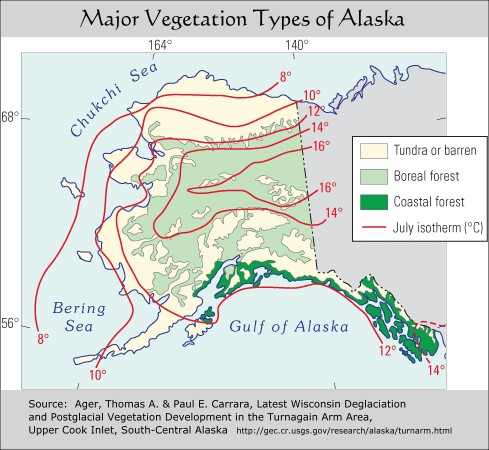
July average temperatures in the Unimak Area are only 10° C (50° F.) These low summer temperatures are coupled with a short growing season. The cool temperatures mean that the woody stems and buds on shrubs cannot become strong enough by autumn to survive dessication by the frequent cold, dry winter winds. The cold, dry wind acts to "prune" the shrubs, controlling their growth. In this way, the shape and form of shrubs such as alder, willow, salmonberry and blueberries are determined by the wind microhabitat in which they are found. Favorable topography and snow-cover act to protect the shrubs from winter "wind pruning".
Major Plant Habitats on Unimak Island, Alaska
A special note on Alder, the largest shrub in the Unimak area: "Alder is particularly noted for its important symbiotic relationship with Frankia alni, actinomycete filamentous nitrogen-fixing bacterium. This bacterium is found in root nodules which may be as large as a human fist, with many small lobes and light brown in appearance. The bacterium absorbs nitrogen from the air and makes it available to the tree. Alder, in turn, provides the bacterium with carbon, which it produces through photosynthesis. As a result of this mutually-beneficial relationship, alder improves the fertility of the soils where it grows, and as a pioneer species, it helps provide additional nitrogen for the successional species which follow."9 These special characteristics of Alder make it an extremely important shrub in the Unimak area for colonizing floodplains and disturbed areas. Alder provides nitrogen to the shrubs, grasses and heraceous plants that live in its immediate vicinity, thereby supporting a diverse plant community.
An interesting description of Aleutian plant communities written by Olaus Murie can be read here.5









Common wild plants of Unimak Island and their uses:
The Aleut (Eastern Unangan) names and uses that accompany the plant photographs below are taken from "Aleut/Unangax Ethnobotany..." by Veltre et al. Please see this on-line publication for more detailed information, which can be downloaded here.1 Plant identification has not been done by a professional botanist; if errors are found, please contact webmaster. Click on plant name to jump to the location of the plant photograph lower down on this page.
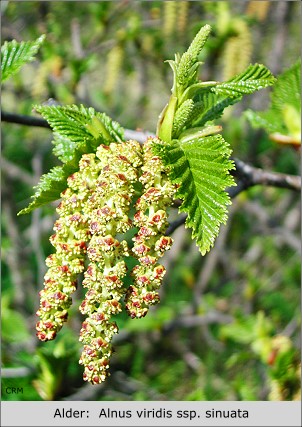
<--Alder: Alnus viridis ssp. insinuata
5 June 2004
Aleut Name: --
Use: Large baskets made from branches, red dye made from bark, woody material1
Also used for firewood and smoking salmon
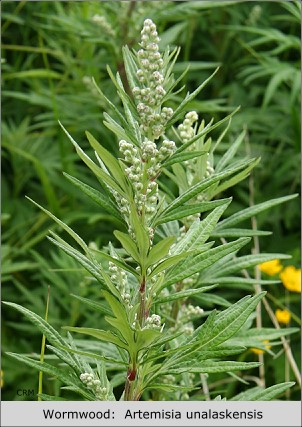
-->Wormwood: Artemisia unalaskensis
12 August 2007
Aleut Name: sixsiqax'
Use: Used in steam baths and slapped against skin gently; aches and pains relieved by placing hot, steamed leaves on sore areas; tea from leaves relieves colds, sore throats and stomachaches1
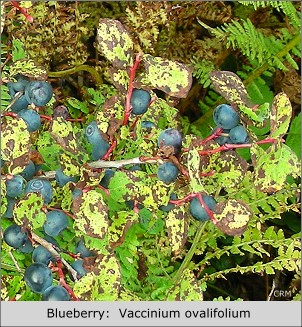
<--Blueberry: Vaccinium ovalifolium
28 September 2008Aleut Name: --
Use: Traditional food
This blueberry is abundant in Unimak area. Bush grows to 3 ft, usually on south-facing ravine slopes where protected by winter snow drifts.
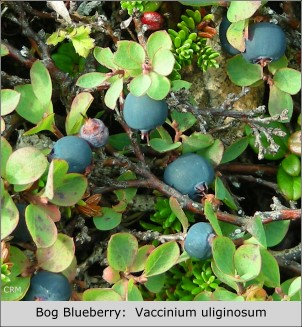
-->Bog Blueberry: Vaccinium uliginosum
21 Sept 2008
Aleut Name: --
Use: Traditional food
This blueberry grows to height of several inches in tundra often mixed with Empetrum.
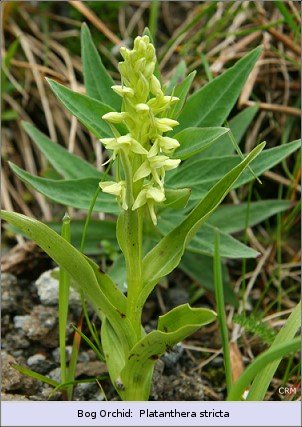
<--Bog Orchid: Platanthera stricta
26 June 2005Aleut Name: chaxitxam kangaa, chaxitxam kanya
Uses: Roots eaten, cooked with putchki (Heracleum lanatum) leaves1This orchid grows in moist area, usually among other herbs and grasses.
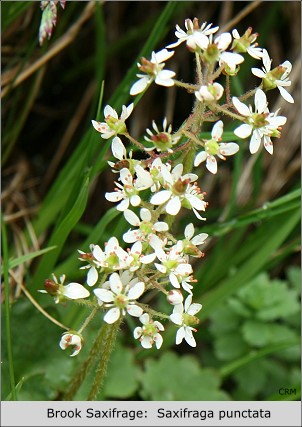
-->Brook Saxifrage: Saxifraga punctata
26 June 2005Aleut Name: --
Use: Traditional green foodThis saxifrage grows in very wet conditions, usually in very rocky areas, even cliff faces, where there is dripping water.
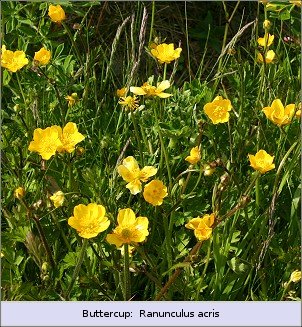
<--Buttercup: Ranunculus acris
10 July 2005Aleut Name: Kangla'gin Ama'gi
Use: Used to hurt enemy1This buttercup is very invasive and weedy around False Pass village.
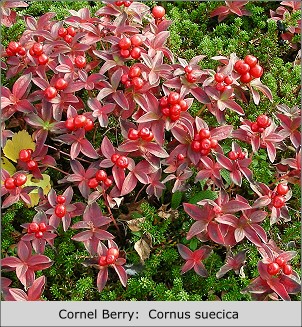
-->Cornel Berry, Bunchberry: Cornus suecica
28 September 2008Aleut Name: Kaxa'gix
Use: None mentioned for Aleut.Linnaeus says the Laplanders made a pudding by boiling with whey until thick like a "flummery" and eating with cream.
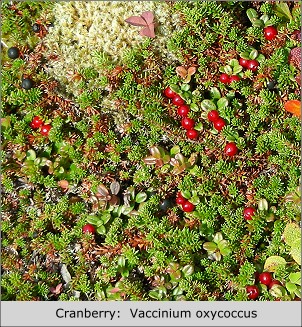
<-- Cranberry: Vaccinium oxycoccus
21 September 2008Aleut Name: --
Use: Traditional foodThis cranberry grows in the tundra, often with Empetrum, Arctostaphylos & mosses
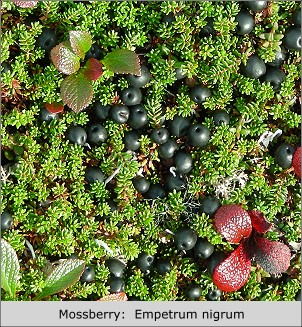
-->Mossberry, Crowberry: Empetrum nigrum
21 September 2008Aleut Name: qaayum qaxchikluu, kidngax', kidngam qaayuu
Use: Berries as food, excellent pie; plant as mattress material & fuel.1
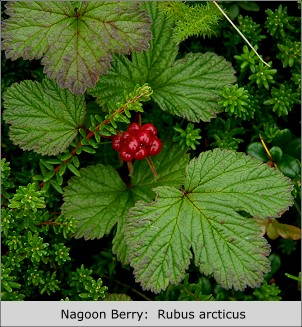
<--Nagoon or Cloud Berry: Rubus arcticus
26 August 2007Aleut Name: --
Use: Traditional food.This delicious berry is common in tundra environments but not abundant.
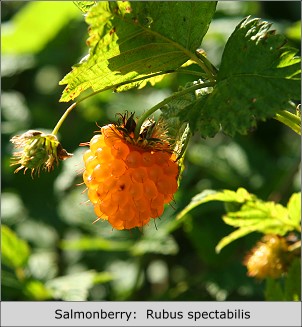
-->Salmonberry: Rubus spectabilus
28 August 2007Aleut Name: I'tim u'lgux
Use: Traditional food1Salmonberry thickets are often very dense and can reach heights of 8 feet. Most berries reddish in color, but golden ones are found in some areas.
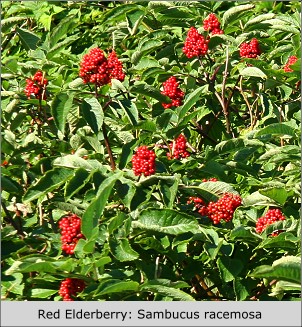
<--Red Elderberry: Sambucus racemosa
28 August 2007Aleut Name: --
Use: None known locally. "Berries should always be eaten cooked, as they are potentially poisonous when raw." "Emetic." "Berries formerly boiled into a thick sauce, dried and used for food.-Bella Coola"7
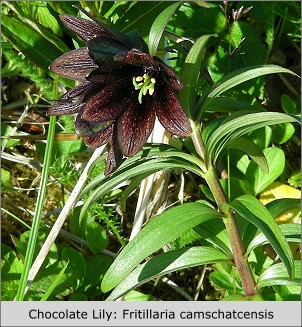
-->Chocolate Lily: Fritillaria camschatcensis
27 July 2008Aleut Name: saranax', Alugax' (root bulb)
Use: Root is eaten1Sometimes called "Rice root", describing bulblets resembling rice.
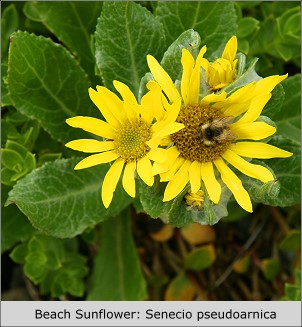
<--Beach Sunflower: Senecio pseudoarnica
1 September 2008Aleut Name: alngaayux'
Use: Leaves help wounds heal.1Common very close to beach, growing with Elymus.
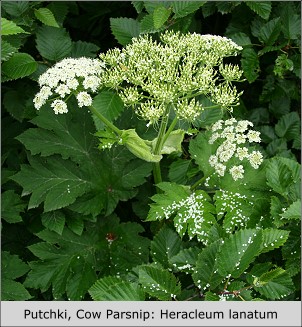
-->Putchki or Cow Parsnip: Heracleum lanatum
15 July 2005Aleut Name: saqudax'
Use: Stems eaten; leaves as poulstice & tea; remove scent from hands; fuel.1Children love strong celery-like taste of stalks.
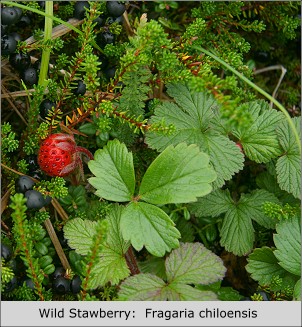
<--Wild Stawberry: Fragaria chiloensis
26 August 2007Aleut Name: tudungax'
Use: Food; stem as part of amulet1Grows in sandy areas, often in beach dunes or sandy hillsides.
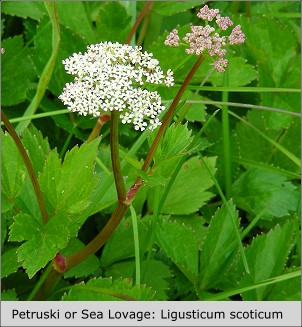
-->Petruski or Sea Lovage: Ligusticum scoticum
3 August 2008Aleut Name: qanisan, qanasin,
Use: Young leaves eaten raw or cooked with fish1.Has pleasant celery-like taste.
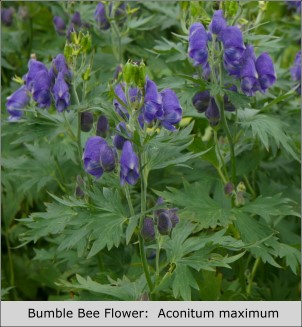
<--Monkshood or Bumble Bee Flower: Aconitum maximum
21 August 2005Aleut Name: anusnaadam ulanqin
Use: Possibly used as poison for harpoons & arrow1sBlooms in late summer.
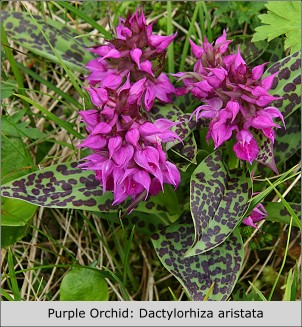
-->Purple or Showy Orchid: Dactylorhiza aristata
26 June 2005Aleut Name: quungdiix'
Use: Roots cooked & eaten1This is an early spring-blooming showy orchid.
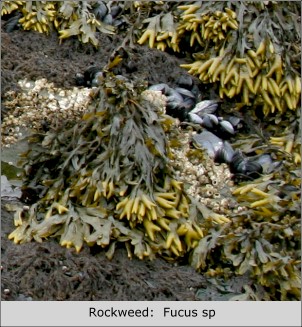
<--Rockweed: Fucus sp
15 May 2005Aleut Name: Kangadigix
Use: Not known locally1Also commonly called Bladderwrack. Edible, but no reports of use locally. Good source of iodine, potassium, bromine.
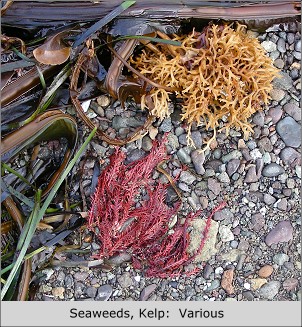
-->Seaweeds, Kelp: Various
18 October 2009Aleut Name: --
Use: --Examples of just a few kinds of common seaweed.
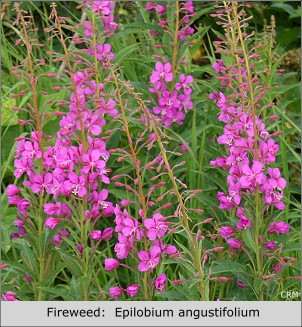
<--Fireweed: Epilobium angustifolium
12 August 2007Aleut Name: kimliiyax', kipriiyax'
Uses: Tea from dry leaves1Blooms in late summer, often with Aconitum.
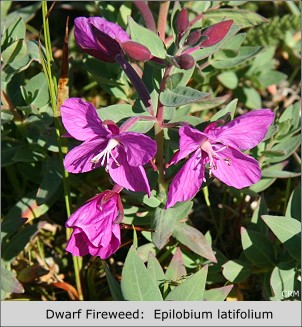
-->Dwarf Fireweed: Epilobium latifolium
1 September 2007Aleut Name: --
Uses: -- Not known locallyEvery part of this plant is edible, tasting much like spinach. Innuit eat leaves and flowers raw or cooked.6
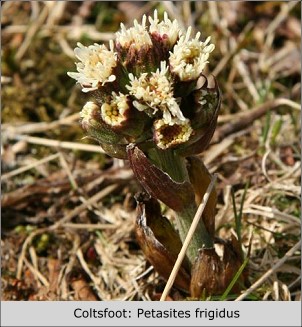
<--Coltsfoot: Petasites frigidus
8 May 2005Aleut Name: --
Uses: None known locallyInnuit: Young leaves & flowering stems eaten raw as salad, cooked as a potherb or made into a "sauerkraut".6
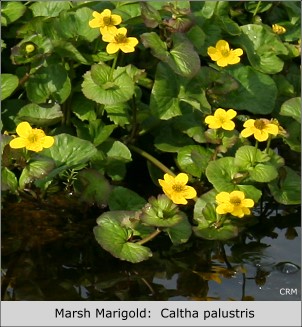
-->Marsh Marigold: Caltha palustris
10 July 2005Aleut Name: anim kangag'a
Uses: Roots chewed for strength1Considered poisonous if not cooked.6
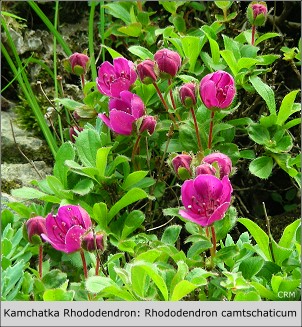
<--Kamchatka Rhododendron: Rhododendron camtschaticum
27 July 2008Aleut Name:--
Uses: -- None known locallyThis perennial low shrub is deciduous.
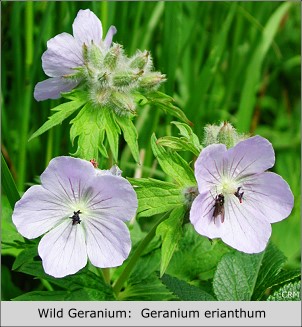
-->Wild Geranium: Geranium erianthum
26 June 2004Aleut Name: anisnaadam
Uses: Leaves and roots used in medicinal teas to treat sore throats or as a wound wash.1
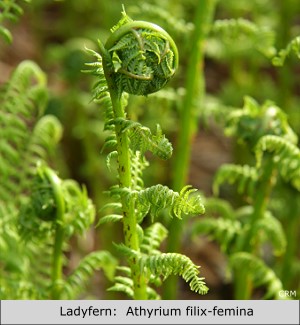
<--Ladyfern: Athyrium filix_femina
18 June 2005Aleut Name: --
Use: None known locally."New shoots and rhizomes used for food."-Salish7
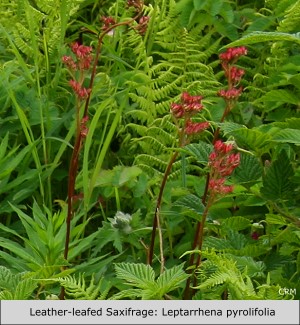
-->Leather-Leafed Saxifrage: Leptarrhena pyrolifolia
17 July 2005Aleut Name: alix'siisix'
Use: Tea from leaves treated sicknesses including influenza.1
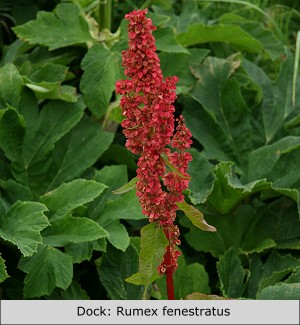
<--Dock or Wild Rhubarb: Rumex fenestratus
21 August 2005Aleut Name: aalungaayax', quuguulnaadax'
Use: Plant used medicinally, juice used to heal burned lips from putchki, used for bandages, stem eaten as traditional food.1
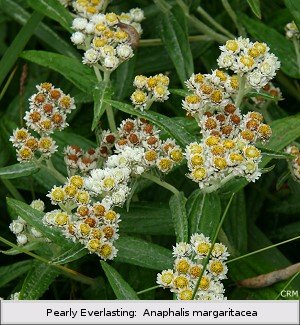
-->Pearly Everlasting: Anaphalis margaritacea
21 August 2005Aleut Name: Cingatudax, ulngig'dagax'
Use: ".. leaves crushed and placed on cut will help stop bleeding, stuffed in nose to stop nosebleeds, tea from leaves relieve stomach pains, chest colds, and sore throats and will reduce fever"1
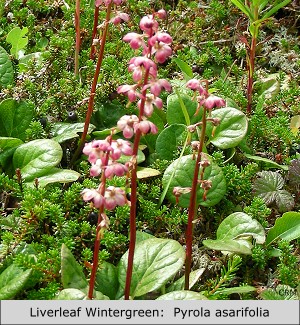
<--Liverleaf Wintergreen: Pyrola asarifolia
8 September 2008Aleut Name: --
Use: None known locallyUsed by many Native American people as medicine; for liver, kidneys, eyes etc.7
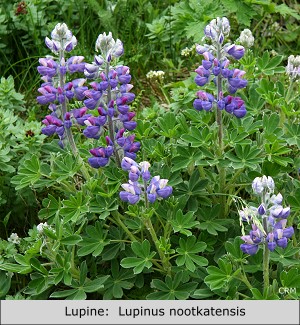
-->Lupine: Lupinus nootkatensis
26 June 2005Aleut Name: anix', tang'ag'im aningin,
Use: Root is eaten.1 Roots considered poisonous by some people.7
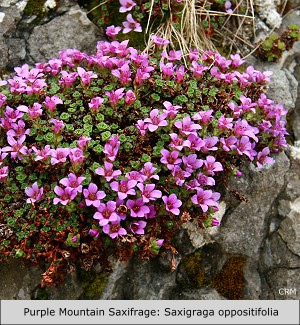
<--Purple Mountain Saxifrage: Saxifraga oppositifolia
15 May 2005Aleut Name: --
Use: None foundTogether with Empetrum, the earliest blooming wild plants in the Unimak area. Usually grows on cliff faces.
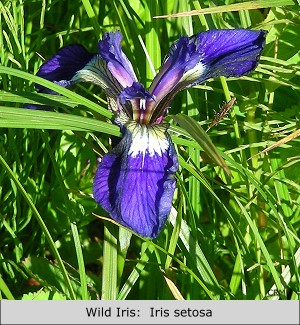
-->Wild Iris: Iris setosa
27 July 2008Aleut Name: nuusnuchx'aadan
Use: "Used medicinally, tea made from roots for an effective laxative and to treat gastric disorders"1
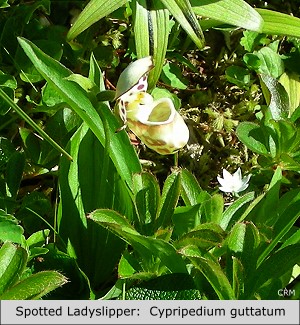
<--Spotted Ladyslipper: Cypripedium guttatum
27 July 2008Aleut Name: --
Use: No known uses.Usually grows in restricted areas in tundra, often with Rhododendron and Fritillaria.
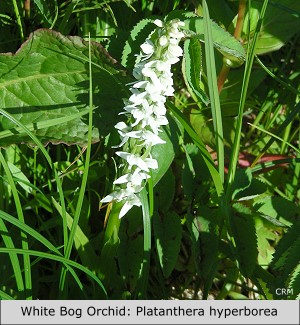
-->White Bog Orchid: Platanthera hyperborea
27 July 2008Aleut Name: caqitxax'
Use: Root is eaten.1As the name implies, grows in wet area, often with Rumex and sedges.
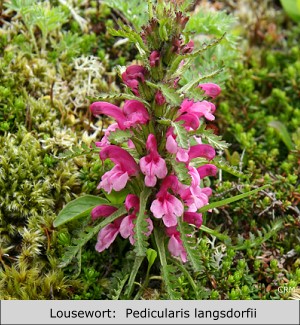
<--Lousewort: Pedicularis langsdorfii
26 June 2005Aleut Name: --
Use: None known locally.Innuit used a closely related species, P. kanei for food, (roots, flowers, leaves).7
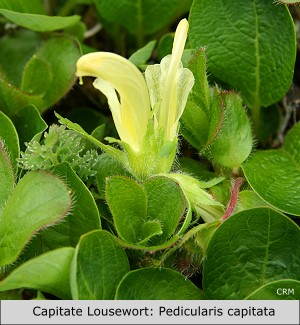
-->Capitate Lousewort: Pedicularis capitata
26 June 2005Aleut Name: --
Use: None known locally."Roots or young flowering stems of all Pedicularis (Louseworts) can be eaten raw or used as a pot-herb." Also medicinal. 8
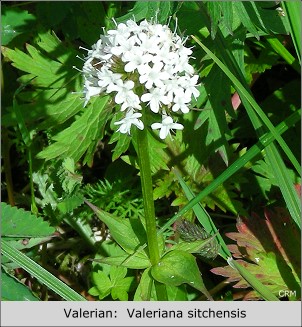
<--Valerian: Valeriana sitchensis
18 June 2005Aleut Name: --
Use: None mentioned for Aleut. Plant used by other native groups as medicine to treat pains, colds, bruises and for mixing with other herbs for smoking.7
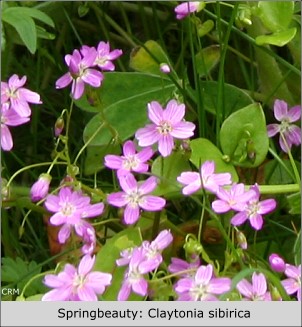
-->Springbeauty or Rain Flower: Claytonia sibirica
26 June 2005Aleut Name: Ci'lum amag'i
Use: None mentioned for Aleut. Plant used by other native groups as medicine and food.7
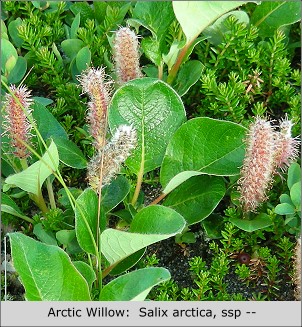
<--Willow, tundra: Salix arctica ?, ssp-?
27 July 2008Aleut Name: --
Use: None mentioned for Aleut. Needs better species ID.Grows in tundra with Empetrum; has long red stamens when blooming.
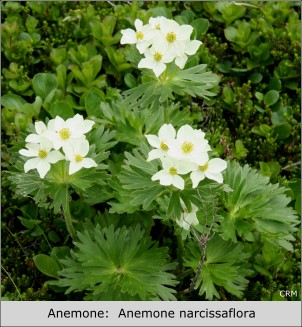
-->Anemone or May Flower: Anemone narcissiflora
26 June 2005Aleut Name: chix'udangix'
Use: Roots boiled and juices used to treat hemorrhaging, white blossoms once used as fishing lures.1
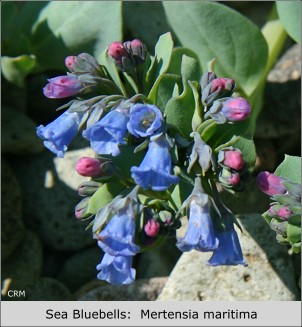
<--Bluebells or Sea Bluebells: Mertensia maritima
Aleut Name: --
Use: --Mentioned by T. Bank, but no uses listed.1Eskimos: Long, leafy stems boiled, cooked briefly and eaten with seal oil.7
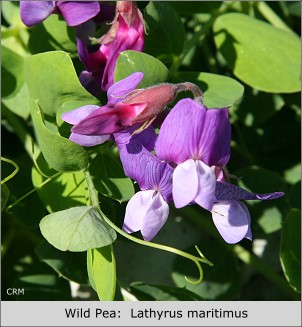
-->Wild Pea or Beach Pea: Lathyrus japanicus ssp. maritimus
Aleut Name: Kumgux'
Use: None mentioned for Aleut.T. Bank says this plant used by Aleut as fiber for weaving.7
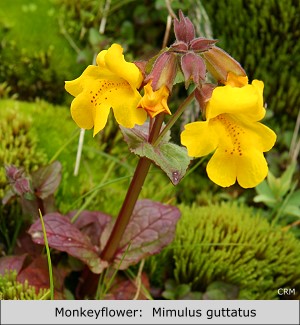
<--Monkeyflower: Mimulus guttatus
26 June 2005Aleut Name: --
Use: None mentioned for Aleut.
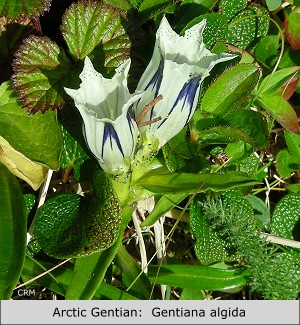
-->Arctic Gentian: Gentiana algida
24 August 2008Aleut Name: --
Use: None mentioned for Aleut.Grows in alpine tundra on Unimak.
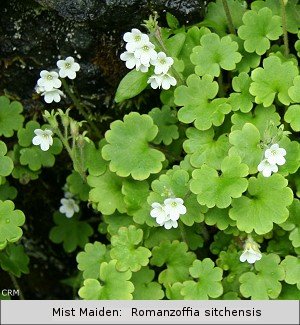
<--Mistmaiden: Romanzoffia sitchensis
26 June 2005Aleut Name: --
Use: None mentioned for Aleut.
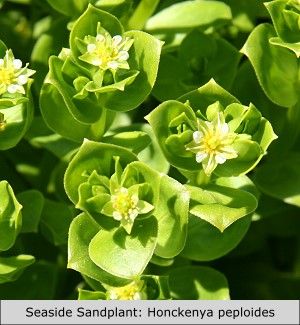
-->Seaside Sandplant: Honckenya peploides
Aleut Name: --
Use: None mentioned for Aleut.Used by Inupiat for food: "Sour leaves and shoots eaten with seal oil and sugar."7 Grows at water's edge on the seashore with Elymus.
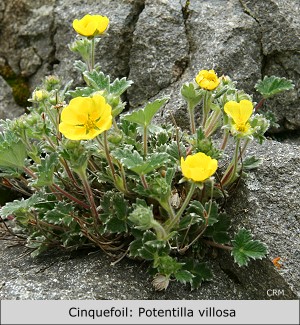
<--Cinquefoil: Potentilla villosa
26 June 2005Aleut Name: --
Use: None mentioned for Aleut.
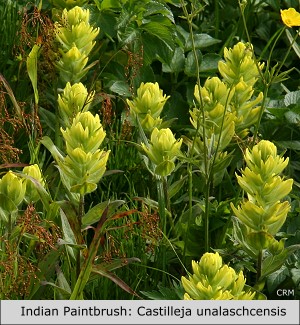
-->Alaska Indian Paintbrush: Castilleja unalaschcensis
10 July 2005Aleut Name: --
Use: None mentioned for Aleut.
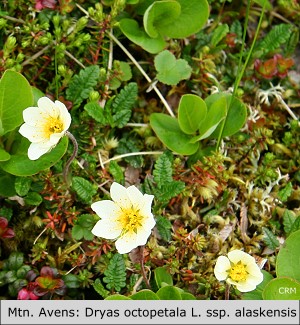
<--Alaskan Mountain Avens: Dryas octopetala L. ssp. alaskensis
26 June 2005
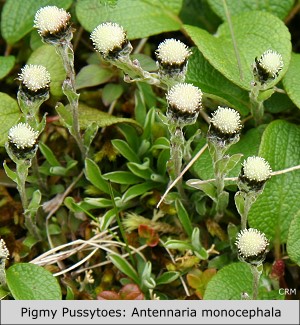
-->Pigmy Pussytoes: Antennaria monocephala
26 June 2005Aleut Name: --
Use: None mentioned for Aleut.Grows in alpine tundra on Unimak.
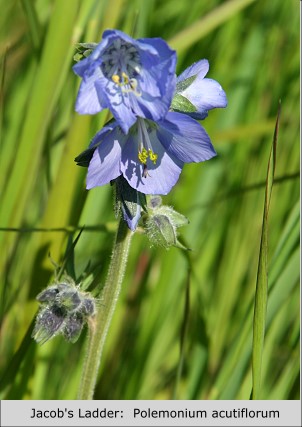
<--Jacob's Ladder: Polemonium acutiflorum
7 July 2007
Aleut Name: --
Use: None mentioned for AleutNo other uses for this particular Polemonium species found.
Jacob's Ladder grows in damp or even wetland areas in the Unimak area, growing to a height of about 3 feet. Individual plants are scattered amongst grasses. Seen growning in False Pass near the old boat ways area and also in Ikatan near the old cannery site.
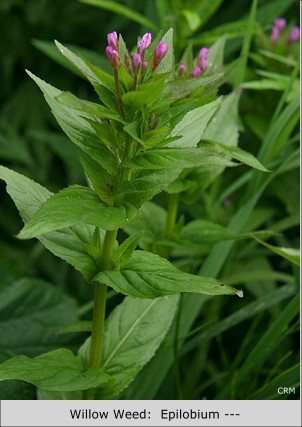
-->Willow Weed: Epilobium --?
7 July 2007Aleut Name: --
Use: None mentioned for AleutNo other uses found for this species of Epilobium.
Grows in moist areas, often near fringes of alder thickets.
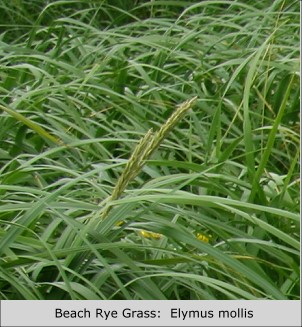
<--Beach Rye Grass: Elymus mollis
20 July 2007Aleut Name: Taxyux' (Unalaska)
Use: Baskets, carpets, mats, house covering, cordage, burial clothes, capes1Grows abundantly at water's edge along seashore, fertilized by seaweed blown up by storms.
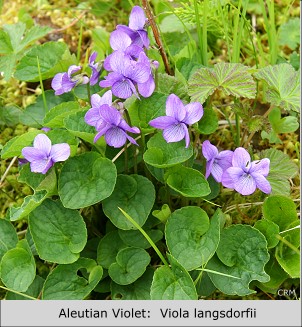
-->Aleutian Violet: Viola langsdorffii
26 June 2005Aleut Name: --
Use: None mentioned for AleutNo other uses for this particular species found.
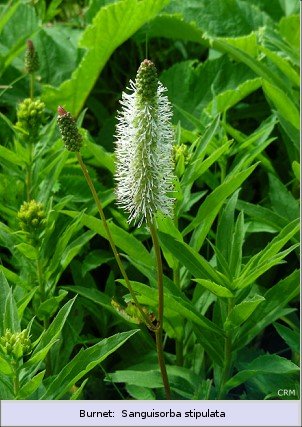
<--Burnet: Sanguisorba stipulata
9 August 2008Aleut Name: None found.
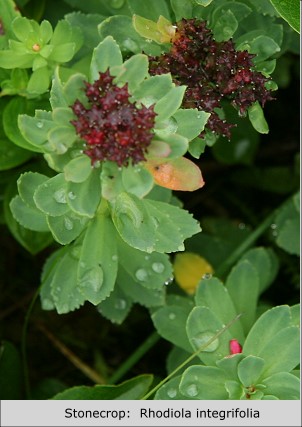
-->Stonecrop: Rhodiola integrifolia
7 August 2005Aleut Name: --
Use: None mentioned for AleutEskimo: Red plant tops used to make a tea-like beverage. Plant eaten fresh, soured or in oil. Roots chewed and the juice spat out for sores in the mouth. 7
References:
1) CAFF 2006. Veltre, D.W., Pendleton, C.L., Schively, S.A., Hay, J.A., and Tararenkova, N.: Aleut/Unangax Ethnobotany: An Annotated Bibliography. For a project on Traditional Use and Conservation of Plants from the Aleutian, Pribilof, and Commander Islands. Aleut International Association, University of Alaska Anchorage, and Institute for Circumpolar Health Studies, in cooperation with CAFF. CAFF Flora Technical Report No. 14, CAFF International Secretariat, Akureyri, Iceland. ISBN No: 9979-9778-0-9
2) URL: http://gec.cr.usgs.gov/research/alaska/turnarm.html
3) http://www.unesco.org/mabdb/br/brdir/directory/biores.asp?mode=gen&code=USA+01
4) http://en.wikipedia.org/wiki/Tundra
5) http://openlibrary.org/books/OL5789203M/Fauna_of_the_Aleutian_Islands_and_Alaska_Peninsula (Olaus J. Murie)
6) http://herb.umd.umich.edu/herb/search.pl?searchstring=Chamerion+latifolium
7) http://herb.umd.umich.edu/herb/search.pl
8) http://www.flora.dempstercountry.org/0.Site.Folder/Species.Program/Species2.php?species_id=Pedi.capi#uses
9) http://en.wikipedia.org/wiki/Alder